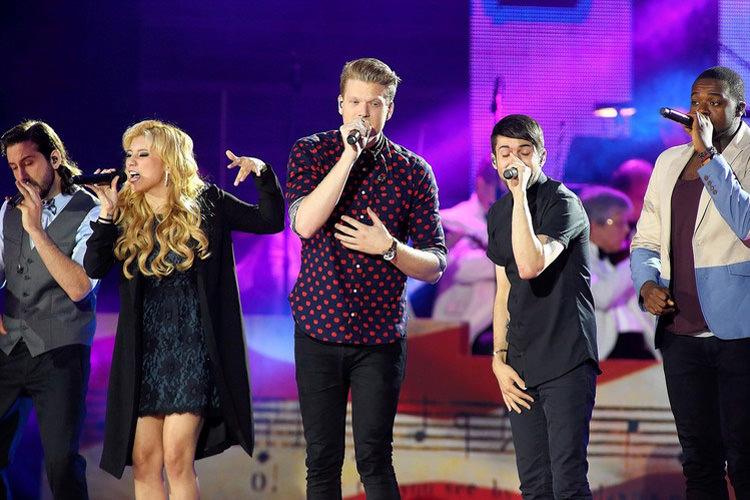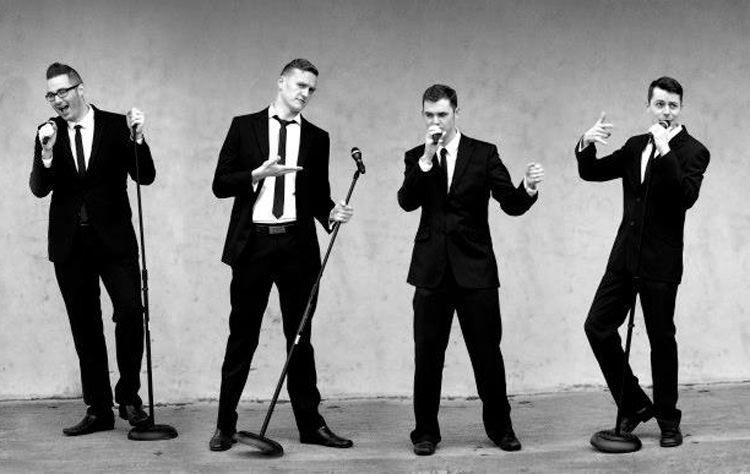A cappella music - the beauty of simplicity, exemplified in sound
One of the best things about being a music fan in this day and age is that there’s a simply wonderful array of genres and styles to get into. Whether you’re on the hunt for something upbeat and punchy, artistic and soulful, or relaxing and serene, there’s bound to be an impeccable selection to choose from.
If you’ve tuned into our station before or read our work, you’ll know that we lean towards the latter style. Peaceful, serene, soothing and relaxing music is what we strive for, here at Radio Art, and we’re always on the lookout for the most innovative styles to share with you here.
Today, we’re going to be diving into a niche genre of music that we believe simply doesn’t get enough attention from mainstream music press and publications. A cappella music got a brief taste of pop culture attention with the movie series Pitch Perfect, but it’s much deeper than that- and we’re sure you’re going to love learning more about it.
In this post, we’re going to be taking a look at;
- What a capella music is
- The best a capella artists to support today
- Why it’s essential to look at for music students
- How it can be used for relaxation and self care
- The Radio Art a capella channel
We hope you find this post handy, and we encourage you to check the style out today.

What is a cappella music?
To start off with, let’s break down exactly what the term a cappella music can mean and why it’s such a unique style to be aware of.
The dictionary definition of a capella music is ‘ without instrumental accompaniment ‘ and gives the example of a choir singing chants without any musical backing. This is a great definition, but it misses out a lot of the nuance that can be associated with this particular style.
A cappella music can involve a single artist or multiple artists, singing without any backing. To look at it in more depth, it can involve multiple artists layering the keys that they’re singing in, to get a richer and more vibrant sound. This can be an incredibly soothing and relaxing style to listen to, and it’s worth checking out if you’ve never heard it before.
Moreover, a cappella groups - particularly collegiate a cappella groups, like The Sweet Nothings - will sing without musical backing and create the musical backing themselves. This involves multiple group members mimicking the tones that instruments would have traditionally played in a song, creating a unique and quirky sound.
While many people were introduced to a cappella via movies or college clubs, it’s essential to note that it has deep ties in religion. It’s on record that a capella techniques were used by Christians in the 15th century, due to the wonderful sounds that they could create and the opposition to using any musical instruments when in a place of worship.
Another key point in a capella history that’s worth talking about is the 16th century, which gave rise to cantata music in the 17th century. The aforementioned style included elements that were written exclusively for voices to replace instruments, which has undoubtedly had an influence on modern a capella, too.
Generally speaking, a cappella is a broad and varied term. There are wonderfully dark, spiritual a cappella solo artists, and there are bubbly, energetic a cappella groups that cover modern day pop songs. Whatever you’re interested in, you’re bound to find an a capella artist you like.
Who are the most notable a capella artists?
As with any music genre, it’s immensely difficult to narrow down who the best artist is. There are simply so many iterations upon this style of music that it’s hard to pick, but we’ve tried out best. Here are the a cappella artists and musicians that you need to know about;
● Pentatonix.
● The Swingle Singers.
● Home Free.
● The Manhattan Transfer.
● Peter Hollens.
● The Filharmonic.
● Naturally 7.
This is barely scratching the surface of the incredible groups and artists that exist in the world of a capella, and we’d encourage you to spend some time checking out associated artists for everyone featured in this list.

The role of a capella music in music education
It’s important to note that a capella music can be immensely useful for music students and musicians, even if it’s not a style that they specialise in. It’s featured in a fair few music programs, and can open up a deeper level of learning for many artists.
Put simply, a cappella music helps to break down songs to their simplest levels. It removes distracting electronic noises and autotune that can be found in a plethora of modern music, and encourages listeners to focus in on the beauty of the voice, instead. It can help people to connect with music on a more personal level, without being swept away by editing or tricks.
Moreover, it’s an effective tool to help learn about keys, pitch and tone. Musicians need to have a mastery of these elements, whether they’re performing or writing music, and spending some time reviewing a capella music - especially live performances - is a great way to improve upon this particular set of skills.
Overall, if you’re a musician or music student, we’d absolutely recommend spending some time getting to grips with a capella music today. If you’re up for it, why not see if you can try an a cappella music performance? You might just surprise yourself.
Why is a cappella music so brilliant for relaxation?
Moving on from the importance of a capella for education, let’s dive into why we think it’s such an essential tool for relaxation. After all, here at Radio Art, we strive to enhance relaxation sessions wherever possible for our audience, and we believe that our new Radio Art a capella channel could be just the ticket for many of you.
As noted in the previous section, a capella music breaks songs down to their simplest, most accessible roots. If you’re someone who finds modern day popular music too intense after a long day at work, listening to your favourite songs without the interference of autotune or electronic beats could help you to be calmer and happier in the long term.
Moreover, lots of a capella music can be repetitive- especially when it’s of a more somber, darker tone. Listening to consistent music can be incredibly soothing, and can be wonderful for calming yourself down wherever needed. After all, look at the rise of lo fi music in the online world- that’s immensely repetitive, yet it brings in hordes of listeners on the daily.
If you’re looking to bring in a capella into your self care routine, we’d recommend starting off by exploring the different subgenres and styles that can be associated with it. You can check out our channel for it and see whether you like any of the artists that we’re featuring, and look online for any live performances. If possible, getting to a live show could be even better.
Once you’ve figured out what style of a capella it is that you enjoy, try setting it up so that you can sleep to it, or download it on your phone so that it can accompany you on your walk home. If you’re someone who enjoys spiritual practices and meditation, you could look into older, more spiritual pieces and listen to those while you meditate, too.
No matter what style of music it is that you enjoy, the calming nature of a cappella is sure to help entertain you and soothe you if you add it into your self care routine. Give yourself time to explore the genre, and get to grips with what it has to offer.

Tune into Radio Art for all your relaxation and entertainment needs
All in all, a capella is a truly inspiring and uplifting form of music. No matter who the group is made up of, or where the individual artist draws their inspiration from, listening to a capella music can be a fantastic way to learn more about the world of music, and to improve your relaxation time in the long run, too.
While it’s great to see people bringing more mainstream attention to this fantastic genre of music, it’s essential to remember the meaning and origins behind it. For many people around the world, this still remains a deeply spiritual style of music that’s relevant to how they worship or celebrate their beliefs.
Are you looking to learn more about the world of music? Want to enhance your self care and find even more about relaxing music? If so, you’re going to love what we have to offer, here at Radio Art. We’ve got a wonderful a capella channel, to help inspire and motivate you. Take a look at our full website here today.
Our website respects the intellectual property rights of creators, as well as the music rights of authors and composers.
The musical works are provided solely for the private use of each visitor/user
and any further exploitation of them in any way is prohibited without prior permission from AUTODIA and EDEM Rights.
Radio Art is fully approved by the Greek Collective Rights Organizations | AUTODIA | EDEM Rights
Copyright © RABS - Radio Art Broadcasting services Ltd. All rights reserved.
The Art of Relaxing & Meditation Music
Privacy Policy & TOS








